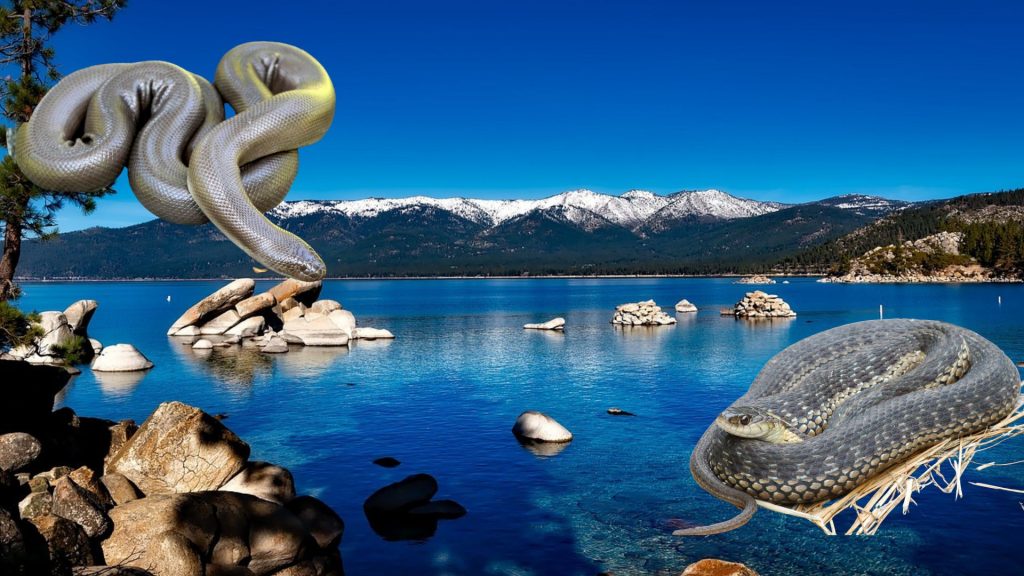Are there snakes in Lake Tahoe? There’s no water snakes, but there are a few species that live around the lake, despite the high altitude…
Last updated on February 1st, 2023 at 09:25 am
Lake Tahoe is often overlooked as a herping destination because of its high altitude (herping meaning the hobby of observing reptiles). Nonetheless, there are a few diverse snake species that are hardy enough to brave the elements. These include Garter Snakes, the Rubber Boa, and even the Great Basin Rattlesnake.
You can find snakes throughout the United States, but not every state. Hawaii for example has none, and neither does most of Alaska.
Snakes may be present in different places, including deserts, forests, and even, in the water, such as in lakes and rivers. In fact, many of the National Parks we enjoy visiting would be overrun with pests if it weren’t for snakes eating them and keeping the numbers under control.
There are about 15 species of water snakes across the country, but none of them are found in Lake Tahoe, perhaps because of the low water temperature.
Personally, I made herping trips to Florida, out west, and down south on a few occasions whilst living in the US. I never considered going looking for snakes at a high-altitude location like Lake Tahoe though until now. Turns out I missed a trick – because while there aren’t many snake species there, those that are present form a diverse and interesting group.
In this article, we’ll take a look at the tough Garter Snakes, Racers, Rattlesnake and Boa that brave the elements to make their home around the lake.
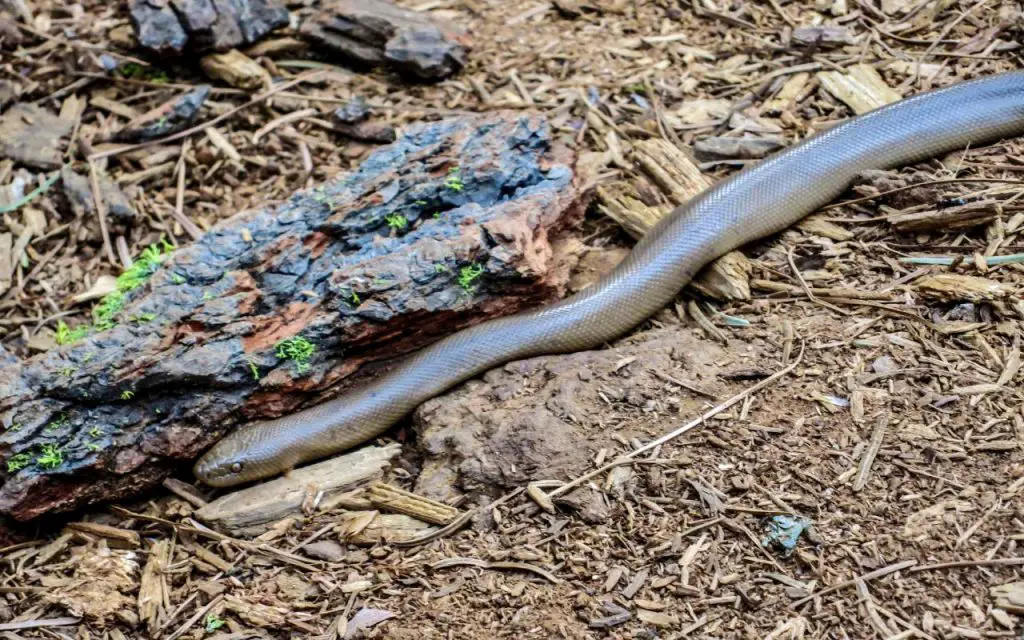
Are there water snakes in Lake Tahoe?
Lake Tahoe, a freshwater lake in the Sierra Nevada mountains at the California-Nevada border, is among the largest lakes in the country. Despite this, it has no native water snakes.
The surrounding areas consist of several renowned ski resorts and beaches. For instance, the Lake Tahoe Nevada State Park, situated northeast, is home to the Sand Harbor beach and Spooner Lake and leads to the Tahoe Rim Trail.
Lake Tahoe mostly has rattlesnakes in the Basin, which come from their winter hibernation during spring and can occasionally be seen basking on trails. These snakes are venomous. However, they are not a threat if you let them keep to themselves and don’t disturb them.
Besides this, you can also find three species of garter snakes in the Basin: the Western Terrestrial Garter Snake (Thamnophis elegans), the Sierra Garter Snake (Thamnophis couchii), and the Valley Garter Snake (Thamnophis sirtalis fitchi).
Out of the snakes present, it tends to be the Garter Snakes which are most abundant and most often observed, due to how hardy they are. And though they aren’t true water snakes, they do like water, and can sometimes be seen foraging at the waters edge or even swimming.
Truckee river snakes
A lot of people who go to Lake Tahoe also go hiking along the Truckee River. This is an area of exceptional natural beauty, and is well worth a detour if you’re in the area.
Around Truckee, you can find the Rubber Boa, the Western Terrestrial Garter Snake (Thamnophis elegans) and the Sierra Garter Snake (Thamnophis couchii) on a regular basis. The other species listed here are present, but tend to be at a lower population density and harder to find.
In general, the Garter Snakes are most often observed near the River itself, or around around nearby streams and ponds. Occasionally, they do also bask on the edges of trails.
List of Snakes found around Lake Tahoe
There are a reasonably high number of snake species in northern California and Nevada. But the number goes down the higher you go into the mountains.
At over 6000ft (1830m), Lake Tahoe has a much lower reptile species richness than lower elevations. Only the toughest, and (sometimes the weirdest) snake thrive there. Let’s take a look…
1. The Rubber Boa (Charina bottae)
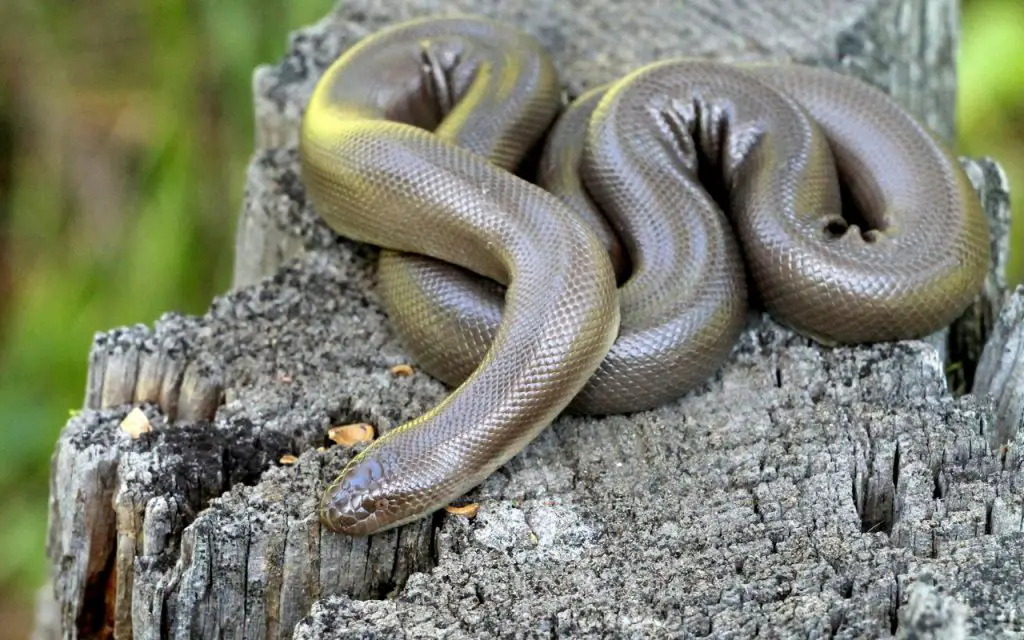
The Rubber Boa or Charina Bottae is a species of Boidae snake native to North America. Also called the ‘Coastal Rubber Boa’ or ‘Northern Rubber Boa,’ this species is dominant in the western United States, particularly the stretch between the eastern Pacific coast, western Utah, and Montana.
You can also find them south as the population stretches up to the San Bernandino and Jacinto mountains. Similarly, Rubber Boas are common in the north, and you can spot them up to southern British Columbia.
Rubber Boas are found in southern California – but overall do seem to do better at higher altitudes and more northerly lattitudes.
Northern Rubber Boas can grow from 21 inches to 26 inches, on average, are usually small, stout, and smooth, and come in different colors – predominantly darker shades, such as brown. They have light yellow bellies but are born pink and develop darker shades of brown as they grow.
Overall, the Rubber Boa is one of North America’s weirdest snakes – and I say that in the nicest possible way. Not only do they have a tail that mimics their head, but who would ever expect to see a Boa living so far north?
2. Western Yellow-bellied Racer (Coluber contrisctor mormon)
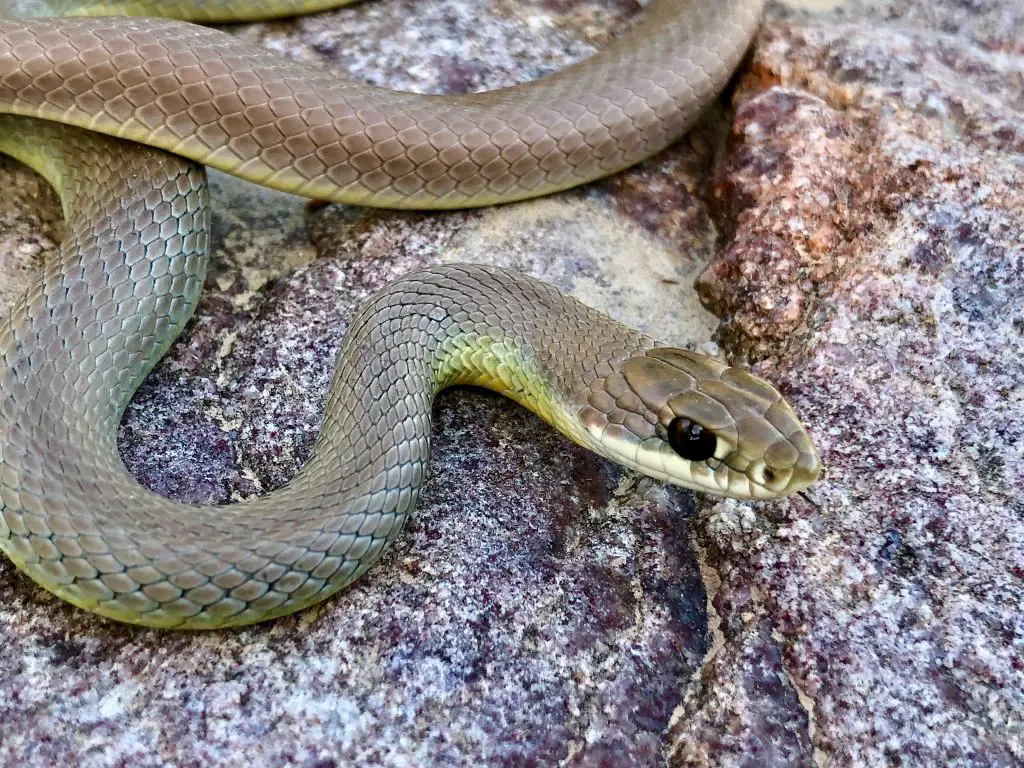
The Western Yellow-bellied Racer, also called western yellow belly racer or western racer, is a subspecies of eastern racer snake, native but endemic to the west of North America. Some scientists previously considered it to be a full species, Coluber mormon, but this nomenclature was abandoned.
They are common in California, Colorado, Montana, Nevada, New Mexico, Oregon, and Utah. Being very cold-tolerant, they also range as far north as southern British Columbia, Canada.
These snakes get their name from their yellow bellies. However, the adults are greeny-gray, and young snakes come with red or brown blotches.
Western Yellow-bellied Racers are long and slender and can grow between 35 and 75 inches. Their heads are narrow, body smooth and dark-colored, while their undersides are light-colored – usually yellow or white.
If you spot one of these around Lake Tahoe, you might not see it for long: they are alert and move away quickly if they see you. It’s best to move very slowly if you want to photograph one.
3. Great Basin Gopher Snake (Pituophis catenifer deserticola)
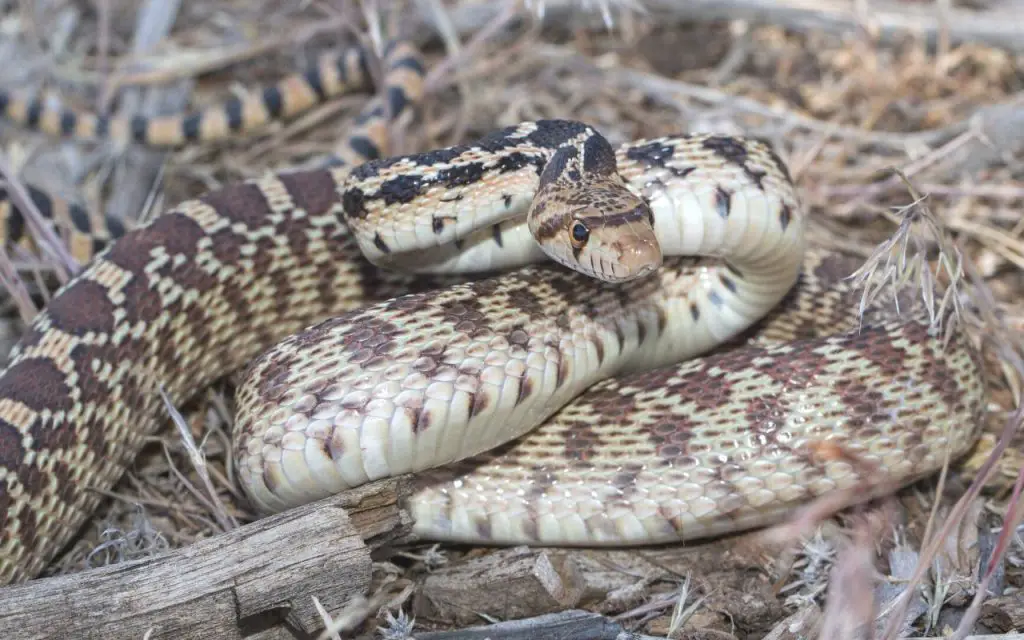
Great Basin Gopher snakes are present across Nevada in many habitats, such as grasslands, shrubs, and forests. They may also occupy rocky areas, primarily when they hunt, where they may hide in the burrows of their prey. Another tough species, their distribution reaches southern British Columbia.
Adult Great Basin Gophers can grow from 2.5 feet to over 5 feet long. These snakes can sometimes be up to 15 inches long as soon as they hatch. The highest recorded growth that a Great Basin Gopher has achieved is 6 feet. However, the subspecies does not usually grow more than 5 feet.
Great Basin Gophers come with narrow heads and wide necks, not to mention heavily keeled scales and a slightly-rounded rostral scale protruding from the tip of their snouts.
These snakes are mostly cream or yellow and consist of large, dark quadrangular blotches along the sides. The colors of these blotches are usually brown, black, or reddish-brown.
They actively seek prey during the day and night and prefer hot weather. Their meals usually include small mammals, such as moles, pocket gophers, rabbits, mice, and rats.
The easiest way to identify a Gopher Snake is by the incredibly loud hisses, grunt and belows it will make if you get too close. They aren’t dangerous, but invest a lot of energy in trying to scare predators away.
4. Desert Striped Whip Snake (Coluber taeniatus)
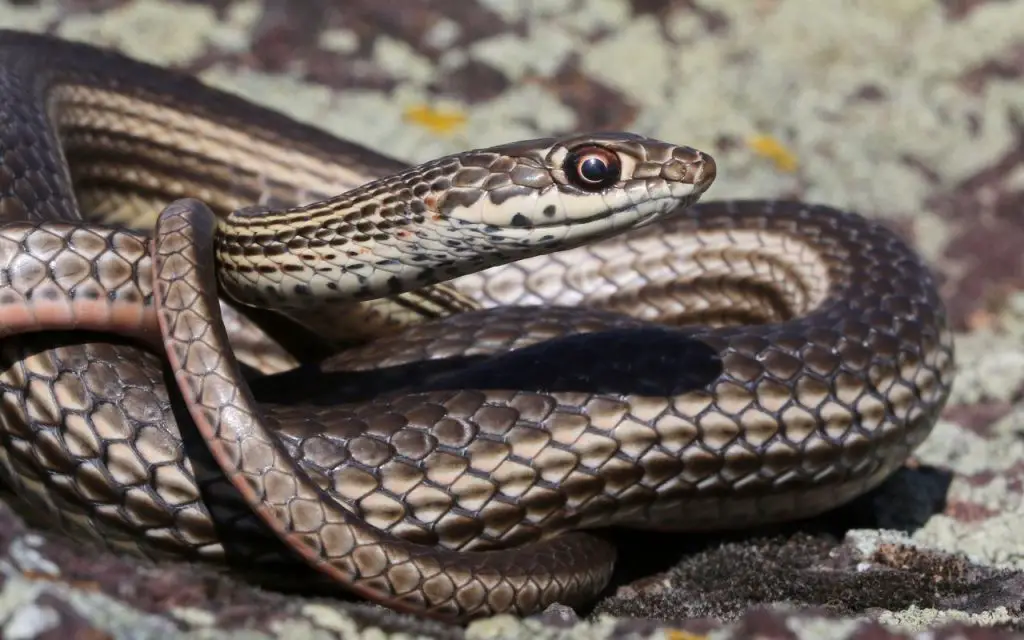
Desert Striped Whip Snakes are a species of fast-moving, non-venomous snakes with long, slender bodies and tails, broad heads and necks, large eyes, and smooth scales. They are in fact another type of Racer, being in the Coluber genus – as is the Yellow-bellied Racer.
The tops are usually olive green, black, brown, or dark gray. Desert Striped Whip snakes come with cream undersides that slowly turn yellow or pink as you get closer to the tail.
Desert Striped Whip snakes also have grayish-white or cream stripes with narrow, dark lines in the middle. These species are active day and night, stalking prey like lizards, small mammals, amphibians, and even birds and their eggs.
Their habitats primarily include deserts, flatlands, and mixed woodlands. However, you can also find Desert Stiped Whip Snakes along riverbanks, and the edges of other water bodies, such as ponds.
5. Western Terrestrial Garter Snake (Thamnophis elegans)
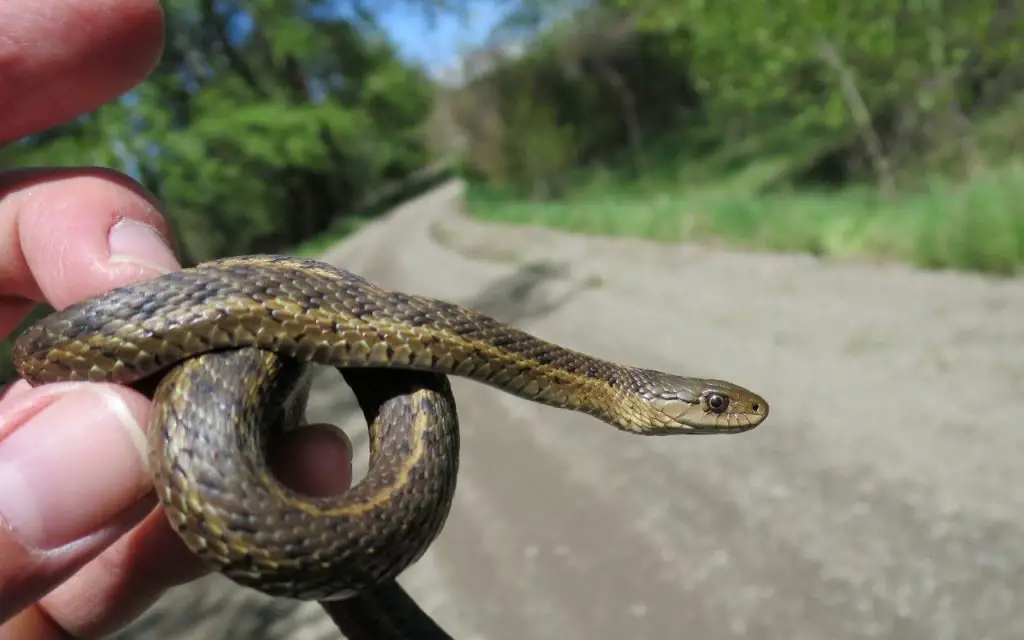
Though they aren’t particularly excited to look at, these Garters have to be respected for how tough they are. Despite the name, they actually love water.
They don’t let a lack of water put them off living somewhere. Terrestrial Garter Snakes have even been observed in deserts, and are often encountered in rocky areas. This shows that they are perhaps one of the most adaptable Thamnophis species out there – which is quite an achievement.
The subspecies of Western Terrestrial Garter Snake found around Lake Tahoe is Thamnophis elegans elegans, and is often referred to a the Mountain Garter Snake.
6. Sierra Garter Snake (Thamnophis couchii)
Sierra Garters are medium-sized, slender snakes. The adult species can grow from 18 to 38 inches long, while the sizes of neonates range from 5 to 6.5 inches. Sierra Garter snakes have narrow heads – slightly wider than their necks, besides narrow snouts, small eyes, and keeled dorsals.
They come in different colors, including olive green, dark brown, and black, and their backs and tops consist of dark blotches.
These snakes are active during the day and live in the water. They feed on fish, amphibians, frogs, and salamanders. Besides this, Sierra Garters may also eat the larvae of these fish and amphibians.
7. Valley Garter Snake (Thamnophis sirtalis fitchi)
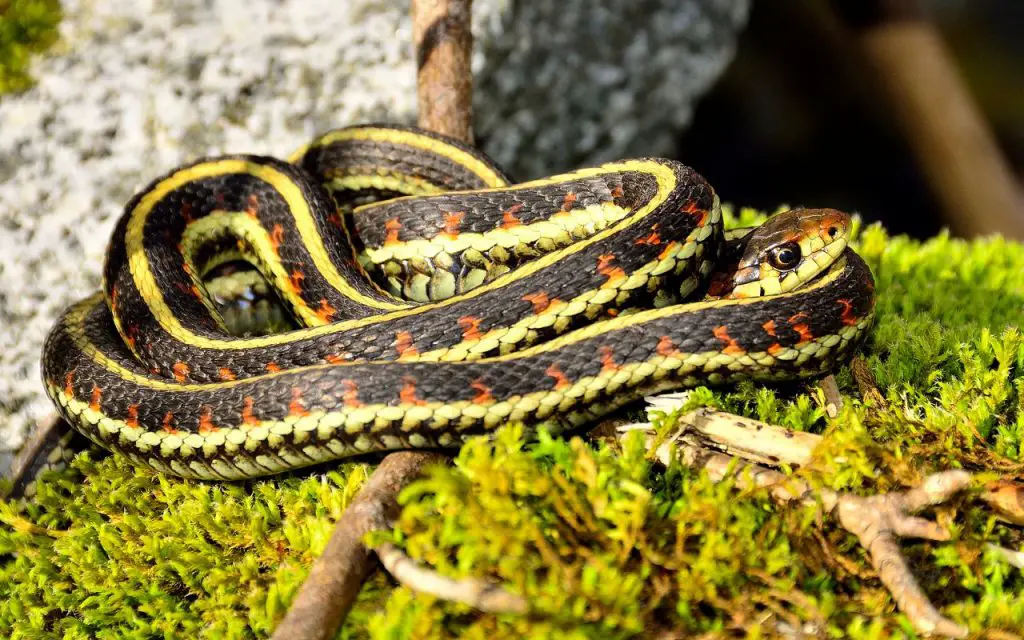
Valley Garter snakes can grow from 18 to 55 inches long, although their average sizes are typically under 36 inches. These snakes come in dark gray, black, and brown colors and consist of broad, yellow dorsal stripes.
They also consist of dark head tops, red sides, and bluish-gray undersides that become darker or paler toward the tail.
Valley Garter snakes are active during the day and usually live in and around water bodies.
They are good swimmers and prey on fish, small mammals, and reptiles. They also eat earthworms, slugs, leeches, fish, amphibians, and their larvae.
8. Great Basin Rattlesnake (Crotalus oreganus lutosus)
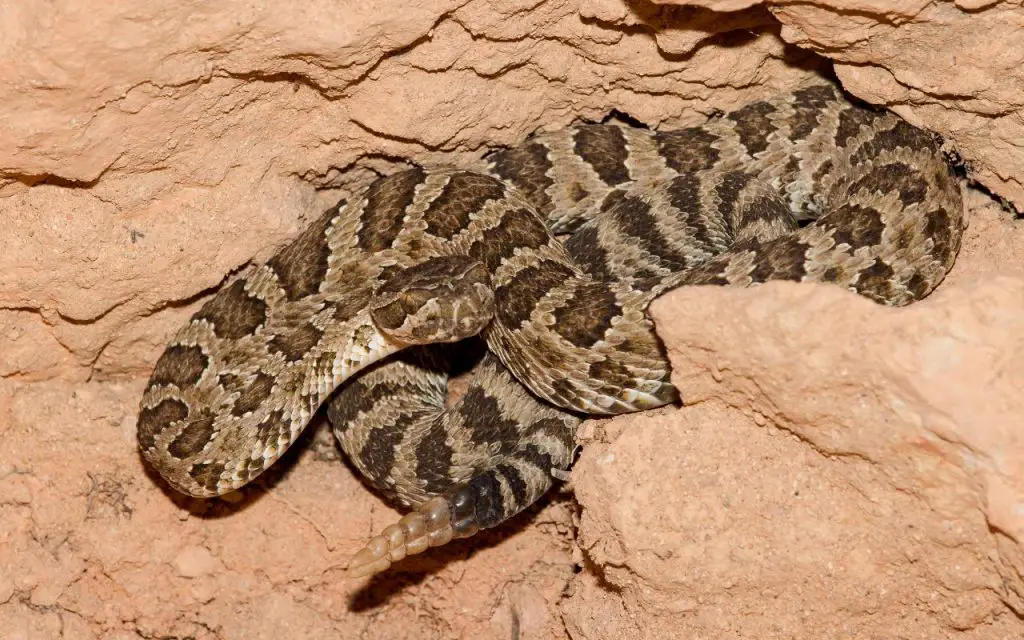
All rattlesnakes, including Great Basin Rattlesnakes are venomous and should be treated with respect. They come with heavy bodies, thin necks, large, triangular heads, and a vertical pupils.
They are commonly called ‘pit vipers’ as they have two pits on either side of the head fronts, above the mouth, which they use to sense and lure in warm-blooded prey.
The Great Basin Rattlesnake is average-sized compared to its relatives, and doesn’t usually exceed 3ft (1m). Though extremely well-camouflaged, they are occasionally seen basking. They tend to prefer dry, south-facing slopes but will also be obersved on the edges of trails.
Are there snakes in Lake Tahoe? The bottom line
There are snakes around Lake Tahoe, a total of eight species observed so far. Out of these, the most aquatic is the Sierra Garter, which spends a lot of time foraging in water, despite not being a true water snake.
In general, you’re most likely to see snakes when hiking the trails around Lake Tahoe and the Truckee River. Given how unique some of the species are, this makes the area a worthwhile destination for a herping trip, or general wildlife photography.
If you’re not a reptile enthusiast, and got to this site anyway, don’t worry! None of the snakes around Lake Tahoe will approach or attack you. Even the Great Basin Rattlesnake will either stay where it is or retreat.
FAQ relating to snakes in Lake Tahoe
Are there water snakes at Lake Tahoe?
No there are no true water snakes around Lake Tahoe. Water Snakes are in the genus Nerodia and are much more common in the eastern United States than out west. What you do have around Lake Tahoe are Garter Snakes in the genus Thamnophis. Garter Snakes spend time swimming around the waters edge, and may also swim or forage underwater, even though they aren’t technically ‘water snakes.
Are there any creatures in Lake Tahoe?
Yes. Lake Tahoe has a wide variety of creatures, including snakes and different fish species. Eight species of snake are present, as are several species of amphibian. If you are very lucky, you might even spot the Northwestern Pond Turtle – Actinemys marmorata which is found mostly to the east of the lake.

Other unusual animals around Lake Tahoe include:
- Black Bears
- Porcupines
- The Sierra Red Fox
- The Mountain Chickadee
Is Lake Tahoe Safe?
Yes. Lake Tahoe is usually safe, even for swimming. However, you might still want to watch out for rattlesnakes, especially at the Basin. You needn’t worry, though. All you need to do to be safe is stay away from them and wear boots if out hiking. In general, reptiles are all bluff and not a lot of bite – don’t step on them and nothing will happen.
What to do if you see a snake swimming in the lake?
Most snakes in Lake Tahoe are non-venomous, so they are harmless. So, you don’t need to worry if you spot a snake swimming in the lake. Just let it go on its way, and it won’t take any notice of you.
If you see a snake swimming it will almost certainly be one of the local Garter Snake species. These snakes are fond of eating amphibians and occasionally fish, which is why you might see one in the water.
As far as their bite goes, Garter Snakes are harmless, they’re actually one of the most popular small snakes for pets due to their small size and lack of aggression.

